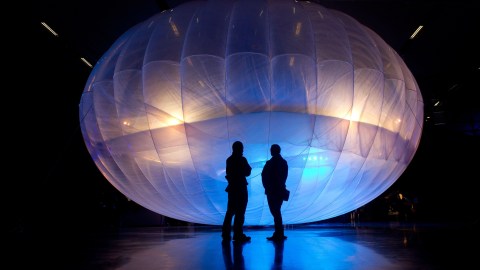Facebook, Alphabet’s Stratosphereic Internet Crafts Enter Uncharted Regulatory Territory

Alphabet and Facebook are working get two-thirds of the world online by beaming internet down from unmanned crafts flying in the stratosphere. But before Alphabet and Facebook can execute its programs, these companies may have to get over some regulatory hurdles.
Facebook’s Aquila drone and Alphabet’s Google Loon and more hush-hush Project Skybender program have already gone through testing periods in the United States and south Pacific. Flying at 65,000 feet (or 11 miles) in the stratosphere, these crafts avoid much of the red tape commercial crafts would normally face.
For some perspective, traditionally, the only occupants in the stratosphere have been military aircraft, weather balloons, and rockets making their way to space. The U.S. Federal Aviation Administration’s commercial jurisdiction tops out at around 60,000 feet. But national airspace extends around 62 miles up, which puts Alphabet and Facebook into a different kind of regulatory territory. So, international regulations will also have to change in order to accommodate these unique cases.
MIT Technology Review writes Facebook and Alphabet will “need the United Nations body that regulates communications satellites, the International Telecommunication Union (ITU), to get on board.”
“This is all somewhat uncharted territory,” Yael Maguire, engineering director at Facebook’s connectivity lab, told MIT Technology Review. “There are ingredients required beyond the technology for this to work.”
Both projects are working to cultivate relationships with existing telecommunication companies within the countries of intended operation. The Loon and Aquila drone function as a means to fill in gaps within a county’s infrastructure, mostly rural areas, where building traditional ground communications would be too costly. Facebook has been working on mapping human settlements across the globe to pinpoint where its drones will do the most good.
Hopefully, through innovative infrastructure projects like these and others, everyone will be able to connect to the internet. After access is established, developing affordable plans may be the next hurdle to get everyone online.
***
Photo Credit: Marty Melville/AFP/Getty Images
Natalie has been writing professionally for about 6 years. After graduating from Ithaca College with a degree in Feature Writing, she snagged a job at PCMag.com where she had the opportunity to review all the latest consumer gadgets. Since then she has become a writer for hire, freelancing for various websites. In her spare time, you may find her riding her motorcycle, reading YA novels, hiking, or playing video games. Follow her on Twitter: @nat_schumaker




